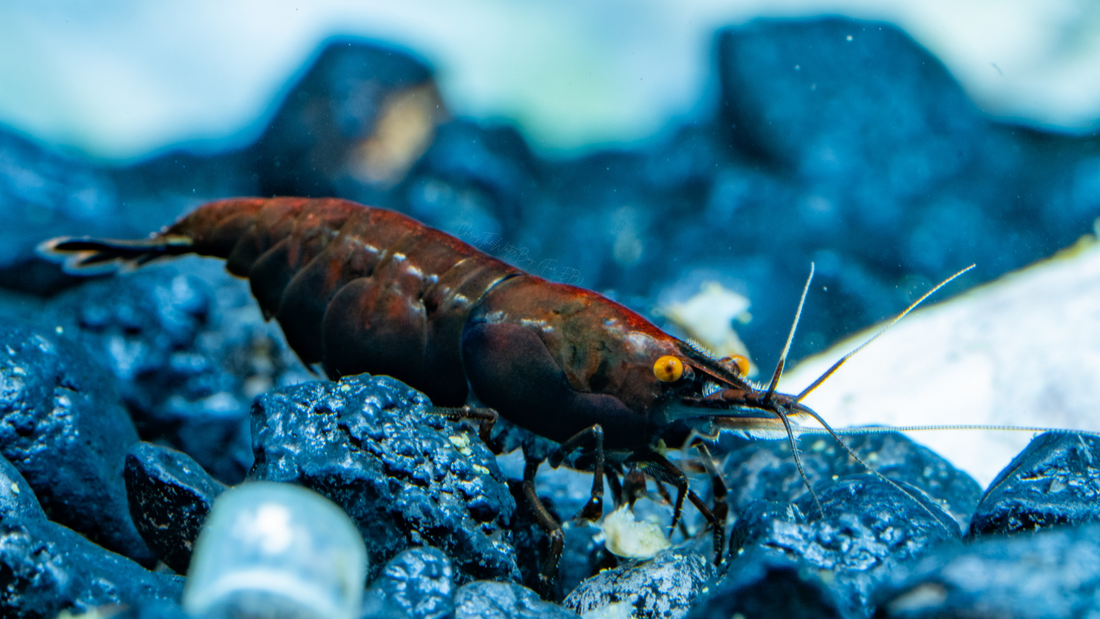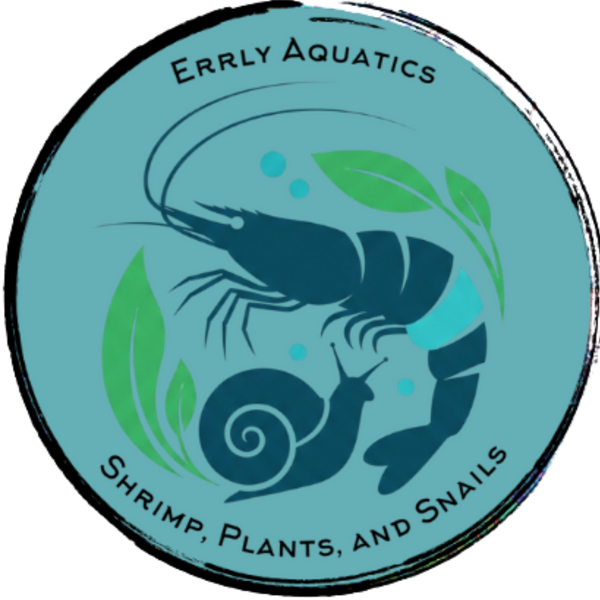
Orange Eye Neocaridina (OE): Care, Breeding & Buying Guide
Share
Striking orange eyes on a hardy Neocaridina davidi body. Learn what makes OE shrimp special and how to keep them thriving.
TL;DR
- Species: Neocaridina davidi with a recessive orange-eye trait.
- Difficulty: Easy–Moderate (as hardy as other Neocaridina when well bred).
- Best Range: 75–80°F, pH 7.0–8.0, GH 6–8, KH 4-6, TDS ~250–350.
- Standout: Bright orange/amber eyes that pop on darker body colors (OE Red/Blue/Black).
- Breeding: Prolific; stabilize OE with selective line breeding and culling.
What Are Orange Eye Neocaridina?
Orange Eye Neocaridina (OE) are selectively bred Neocaridina davidi, the same species as cherry shrimp, where the eye pigment expresses a vivid orange to amber color. The trait is typically recessive, so it takes intentional line breeding to make it consistent in a colony.
Because the eyes contrast best on darker bodies, many aquarists focus on OE Green, OE Blue, or OE Black lines. The result is a shrimp that looks familiar yet unmistakably unique when it catches the light.
Appearance & Color Lines
- OE Red Demon: Cherry/painted red body with orange/amber eyes; very eye-catching under white light.
- OE Blue Demon: Blue Dream style body; the orange eyes glow against navy/teal hues.
- OE Black Rose: Dark chocolate to jet black with a red tint; the eyes appear almost “lit.”
- OE Green Demon: Deep green to jade-black coloration with subtle metallic undertones. The fiery orange eyes glow vividly against the dark, earthy body
- Errly Aquatics is working on some special, never before seen OE lines. You'll have to stick around to see them.
Lower opacity or lighter body colors can still show OE, but the contrast is less dramatic. Regardless of color, the Orange Eye trait looks absolutely stunning.
Care Parameters (Same as Other Neocaridina)
| Parameter | Recommended Range | Notes |
|---|---|---|
| Temperature | 75–80°F (24–27°C) | Stable temps improve molting & breeding. |
| pH | 7.0–8.0 | Neutral to slightly alkaline. |
| GH | 6–8 dGH | Calcium & magnesium for exoskeleton. |
| KH | 4-6 dKH | Buffers pH against swings. |
| TDS | ~250-350 ppm | Match to your source water & remineralizer. |
| Nitrates | < 20 ppm (ideally < 10) | Zero ammonia/nitrite always. |
Tank Setup Essentials
- Biofilm first: Mature, cycled tanks with wood, leaves, mosses, and porous media.
- Plants: Mosses (Java, Christmas), subwassertang, floaters for shade and microfauna.
- Substrate: Inert sand/gravel works; soil not required for Neocaridina.
- Filtration: Sponge or gentle HOB; protect intakes for shrimplets.
- Remineralization: Use a Neocaridina-targeted remineralizer if starting with RO/DI.
Feeding
Prioritize biofilm and algae. Supplement with a varied rotation:
- Shrimp-specific complete foods and mineral sticks
- Blanched veggies (zucchini, spinach) in small portions
- Protein treats (once or twice weekly) for berried females
- Leaves and botanicals (catappa, mulberry) for grazing & tannins
Underfeed slightly rather than overfeed; remove leftovers to keep water pristine.
Breeding & Genetics (OE Trait)
- Recessive trait: Two OE parents always produce OE offspring. OE × normal will yield a mix of Orange Eye and black-eyed offspring after a generation. For a detailed breakdown of breeding percentages, see our full OE Breeding guide.
- Stabilizing a line: Start with quality OE stock, keep a dedicated tank, and select for both eye color and body color/coverage.
- Productivity: Females often carry 20–40 eggs per clutch; stable water and biofilm drive success.
- Culling strategy: Remove off-color, weak, or non-OE individuals to a separate tank to reinforce the line.
- Outcrossing: If vigor slips, add fresh Neocaridina of the same color goal, then re-select OE over 2–3 generations.
Grading & Selection
Because “OE” refers to the eyes, you should grade on two layers:
- Eye intensity & consistency: Clear, bright orange/amber in most or all individuals.
- Body color quality: Depth, evenness, and coverage (painted reds, solid blues/blacks).
Keep breeder groups small (10–20 top specimens) to drive faster improvement.
Common Issues & Fixes
- Molting problems: Check GH and trace minerals; ensure steady temperature and low TDS swings.
- Color fade: Improve diet variety, reduce stressors, and increase cover/plants.
- High juvenile loss: Confirm zero ammonia/nitrite, gentle filtration, and abundant biofilm.
- Line weakness: Consider a careful outcross, then re-select OE aggressively.
Tankmates
Ideal tankmates are nano, peaceful species or inverts that won’t predate shrimplets:
- Snails (ramshorn, nerite, mystery), micro-rasboras, small peaceful tetras, otocinclus
- Avoid larger or predatory fish; even “peaceful” species may pick at shrimplets
Where to Buy Orange Eye Neocaridina
Looking for healthy, well-selected OE shrimp? Errly Aquatics specializes in Orange Eye Neocaridina along with other Neocaridina and Caridina lines, plus snails and live plants to complete your setup.
- Quality Check before shipping
- Clear DOA policy and responsive support
- Care guidance for beginners and breeders alike
Care at a Glance
- Tank: 5–10+ gallons; more volume = more stability
- Water: 75–80°F • pH 7.0–8.0 • GH 6–8 • KH 4-6 • TDS ~250-350
- Food: Biofilm first; shrimp foods, botanicals, veggies
- Breeding: Easy in stable, mature tanks
- Key to success: Stability & deliberate selection
FAQs
Are Orange Eye Neocaridina harder to keep?
The simple answer is no. When sourced from strong stock, they’re as hardy as other Neocaridina. Focus on stability and good mineral balance.
Can I mix OE with other Neocaridina colors?
You can, but expect crossbreeding that may dilute color and the OE trait. Keep a dedicated OE tank if you want to maintain the line.
How many should I start with?
For a breeder group, start with 5-10 high-quality OE individuals to establish genetic diversity while allowing for selection.
How fast will they breed?
In dialed-in tanks, you may see berried females within weeks and a steady trickle of shrimplets thereafter.
